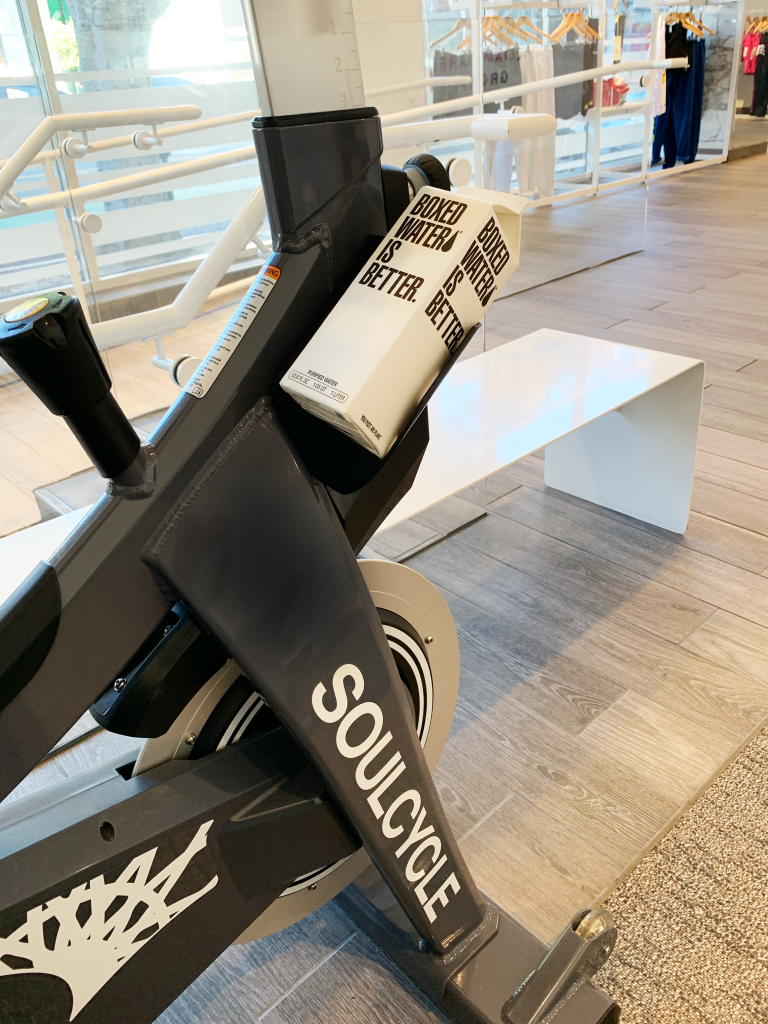Getting those coveted six-pack abs and building a strong core is a goal for many fitness enthusiasts. However, the path to achieving those chiseled muscles can often be accompanied by a risk of injury. Whether you’re a beginner just starting on your fitness journey or a seasoned pro looking to push the limits, knowing how to prevent injuries while working on your abs is essential. In this article, we will explore some common questions people frequently ask about avoiding injuries while working on their abs, providing you with valuable insights to help you reach your fitness goals safely and effectively.

Proper Warm-up
Dynamic stretches
Before starting your abdominal workout, it’s important to warm up your muscles through dynamic stretches. Dynamic stretching involves moving your muscles and joints through a full range of motion. This helps to increase blood flow and flexibility, preparing your body for the workout ahead. Some dynamic stretches you can incorporate into your warm-up routine include leg swings, arm circles, and trunk rotations.
Cardio exercises
In addition to dynamic stretches, including some cardio exercises in your warm-up routine can further prep your body for the abdominal workout. Cardio exercises, such as jogging on the spot, jumping jacks, or jumping rope, increase your heart rate and warm up your entire body. This helps to ensure that your muscles are well-supplied with oxygen, reducing the risk of injury during the workout.
Warm-up sets
Before diving into the more intense abdominal exercises, it’s crucial to perform warm-up sets. These sets should involve lighter versions of the exercises you’ll be performing later. For example, if you’re planning to do crunches, start with a few repetitions of a modified version, such as half crunches or a gentle ab march. This gradually prepares your muscles for the upcoming workload without putting excessive strain on them.
Correct Form and Technique
Engage core muscles
When performing abdominal exercises, it’s essential to engage your core muscles properly. These are the muscles deep in your abdomen that provide stability and support to your spine. To engage your core, imagine pulling your belly button in towards your spine. This activation helps to ensure that you’re effectively targeting the abdominal muscles and reduces the risk of straining other muscles in the process.
Avoid excessive strain
Maintaining proper form and technique while working on your abs is crucial. Avoid using momentum to perform the exercises and instead focus on slow and controlled movements. Jerking or swinging your body can put excessive strain on your neck, back, and hip muscles, increasing the risk of injury. By keeping the movements controlled, you’ll effectively isolate the abdominal muscles and minimize strain on other muscle groups.
Use slow and controlled movements
To further enhance the effectiveness and safety of your abdominal workout, it’s important to perform each exercise with slow and controlled movements. Instead of rushing through the motions, focus on the quality of each repetition. This not only maximizes muscle engagement but also reduces the risk of injury. By taking your time and maintaining control throughout the exercise, you’ll reap the benefits while keeping your body safe.
Gradual Progression
To build strong abs and avoid injuries, it’s crucial to approach your workout with a gradual progression mindset. Here’s how you can do it:
Start with basic exercises
If you’re a beginner or returning to abdominal training after a break, start with basic exercises that target the entire core. Planks, supine leg lifts, and bicycle crunches are great choices as they engage multiple muscles in your abdominal region. These exercises provide a solid foundation for more advanced movements and help improve your core strength overall.
Increase difficulty gradually
As your core muscles become stronger and your form improves, it’s important to challenge yourself by gradually increasing the difficulty of your abdominal exercises. Adding resistance, such as using a medicine ball or dumbbells, can intensify your workout. You can also explore advanced variations of basic exercises to further engage your abs. However, remember to increase the difficulty at a pace that feels comfortable for you and doesn’t compromise your form.
Listen to your body
One of the most important aspects of gradual progression is listening to your body. Pay attention to how your muscles and joints feel during and after each workout. If you experience any sharp pain or discomfort, it’s a sign that you might be pushing yourself too hard. It’s better to take a step back and modify the exercises or decrease the intensity to prevent injury. Remember, building strong abs is a journey that requires patience and self-awareness.
Balanced Training Routine
Include other muscle groups
While working on your abs is important, it’s equally crucial to maintain a balanced training routine that targets all the major muscle groups in your body. Neglecting other muscle groups can lead to muscle imbalances and increase the risk of injuries. Incorporating exercises for your back, chest, arms, and legs into your routine will help promote overall strength and stability, enhancing your abdominal workout as well.
Strengthen back muscles
In addition to exercises that target your abs, it’s essential to strengthen your back muscles. Since the abdominals and back muscles work together to support the spine, a strong back is crucial for maintaining proper posture and preventing injuries. Incorporate exercises like supermans, bird dogs, or rows into your routine to target the muscles in your back. This will help create a balanced and stable core.
Avoid overtraining
While it’s important to challenge yourself, overtraining can lead to burnout and increase the risk of injury. Allow yourself adequate rest days between your abdominal workouts to give your muscles time to recover and repair. Overtraining can also lead to decreased performance and plateau in progress. Remember that rest is just as important as exercise in achieving your fitness goals.

Proper Breathing
Exhale during exertion
Proper breathing technique is often overlooked while working on the abs, but it plays a crucial role in maintaining the stability and effectiveness of your exercises. When performing an abdominal contraction or exerting force, such as during a crunch, exhale slowly and fully. This helps to engage and activate your core muscles properly while stabilizing your spine. Exhaling during exertion also relieves unnecessary tension in the neck and shoulder muscles.
Inhale during relaxation
After the exertion phase of an abdominal exercise, inhale slowly and deeply as you relax the muscles. This allows oxygen-rich air to replenish your body and aids in muscle recovery. Proper breathing helps to prevent dizziness or lightheadedness during the workout. By consciously focusing on your breath, you’ll improve your overall experience and reduce the chances of injury while working on your abs.
Avoid breath holding
In the pursuit of a challenging workload, it’s common for people to unintentionally hold their breath. However, holding your breath while performing abdominal exercises can increase intra-abdominal pressure and place unnecessary strain on your cardiovascular system. To avoid this, make a conscious effort to maintain a steady and controlled breath throughout your workout. This ensures adequate oxygen supply to your muscles and organs.
Using Proper Equipment
Choose a supportive mat
Investing in a supportive exercise mat is essential for maintaining proper form and protecting your body while working on your abs. A good exercise mat should provide ample cushioning to protect your spine and joints. Look for a mat that is thick, durable, and provides a non-slip surface. This will give you a stable and comfortable foundation to perform your abdominal exercises.
Use a stability ball
A stability ball, also known as a Swiss ball or exercise ball, can be a valuable addition to your abdominal workout routine. It adds an element of instability, forcing your core muscles to work harder to maintain balance. Exercises such as ball crunches or ball planks can be performed using a stability ball to engage your abs and improve overall core strength. When using a stability ball, ensure that it is the appropriate size for your height and weight.
Find a stable surface
While performing abdominal exercises, it’s important to find a stable surface to prevent accidents or injuries. Avoid exercising on surfaces that are slippery or uneven, as this can compromise your balance and stability. Instead, opt for a flat and even surface such as a workout mat, carpet, or a level floor. Ensuring a stable surface will enable you to focus on the quality of your movements and maintain proper form throughout your workout.

Avoiding Common Mistakes
Don’t rely solely on crunches
Crunches are a popular exercise for targeting the abs, but solely relying on this one exercise can lead to muscle imbalances and limited progress. It’s vital to incorporate a variety of exercises that engage different parts of your core, including the obliques, lower back, and deep abdominal muscles. Add exercises like Russian twists, side planks, or reverse crunches to your routine for a well-rounded and effective abdominal workout.
Avoid excessive repetitions
While it’s tempting to do numerous repetitions in the hopes of achieving quick results, excessive repetitions can put unnecessary strain on your muscles and joints. Focus on quality over quantity when it comes to your abdominal exercises. Aim for controlled and proper form rather than a high number of reps. It’s better to perform fewer repetitions with excellent technique than rushing through a large number with compromised form.
Don’t push through pain
Pain is your body’s way of signaling that something is wrong. If you experience any sharp or persistent pain while working on your abs, it’s important to listen to your body and stop the exercise. Pushing through pain can lead to more severe injuries and hinder your progress in the long run. If you’re unsure about the cause or severity of the pain, consult a healthcare professional or a qualified trainer for guidance and assistance.
Listening to Your Body
Recognize warning signs
Your body sends warning signs when it’s being pushed too hard or when something isn’t right. It’s important to pay attention to these signals to avoid injuries while working on your abs. Warning signs can include sharp pain, persistent discomfort, swelling, or limitations in range of motion. If you experience any of these warning signs, modify or stop the exercise, and consult a professional if necessary.
Take rest days
Giving your body time to rest and recover is just as important as the exercise itself. Overtraining or not allowing enough rest can lead to fatigue, decreased performance, and increased risk of injuries. Incorporate rest days into your weekly routine to give your muscles time to repair and grow. Rest days can also help prevent burnout and keep you motivated during your fitness journey.
Modify or stop exercises if necessary
Everyone’s body is unique, and what works for one person may not work for another. It’s crucial to listen to your body and modify or stop exercises if needed. If a particular exercise causes discomfort or aggravates an existing injury, find an alternative exercise that targets the same muscle group without causing pain. It’s better to make modifications to your workout routine than to push through and risk further injury.

Getting Professional Guidance
Consult with a trainer
If you’re new to abdominal training or have specific goals in mind, consulting with a certified personal trainer can be highly beneficial. A trainer can assess your fitness level, guide you through proper form and technique, and design a customized workout program suited to your needs and abilities. They can also provide valuable feedback and adjust your routine as you progress.
Seek guidance from a physical therapist
If you have a history of injuries or underlying medical conditions, seeking guidance from a physical therapist is a wise choice. A physical therapist can assess your movement patterns, identify any muscle imbalances or weaknesses, and provide targeted exercises and stretches to improve your overall core strength and stability. They can also help in developing a safe and effective ab workout plan that suits your specific needs.
Join a fitness class
If you enjoy the motivation and energy of a group setting, joining a fitness class can be a great option for working on your abs. Classes such as Pilates or yoga often incorporate exercises that target the core and emphasize proper form and technique. Additionally, having an instructor to guide and correct your movements can help reduce the risk of injuries. Look for classes that are taught by certified instructors and cater to various fitness levels.
Proper Recovery and Rest
Allow time for muscle repair
Your muscles need time to repair and rebuild after a challenging workout. While it’s important to work on your abs regularly, it’s equally crucial to allow sufficient time for recovery. During rest days, your muscles repair micro-tears and grow stronger. Aim to have at least one or two rest days per week to give your abs and overall body the time it needs to recover and adapt to the demands of your workouts.
Get sufficient sleep
Sleep is a crucial element of proper recovery and overall well-being. When you sleep, your body repairs and rejuvenates itself. Aim for a consistent sleep schedule and strive to get the recommended seven to nine hours of sleep per night. Proper rest not only helps with physical recovery but also aids in mental focus and motivation during your abdominal training.
Hydrate and nourish your body
Proper hydration and nutrition are vital components of any fitness routine, including working on your abs. Hydrate your body adequately before, during, and after your workouts to maintain optimal performance and minimize the risk of muscle cramps or injuries. Additionally, fuel your body with a balanced diet that includes a variety of fruits, vegetables, lean proteins, and healthy fats. This provides the necessary nutrients for muscle recovery and supports overall health and well-being.
By following these guidelines for working on your abs, you can minimize the risk of injuries and maximize the effectiveness of your abdominal workout. Remember to warm up properly, focus on correct form and technique, progress gradually, maintain a balanced training routine, breathe properly, use appropriate equipment, avoid common mistakes, listen to your body, seek professional guidance when needed, and prioritize recovery and rest. Incorporating these practices into your routine will help you build strong abs and achieve your fitness goals safely and effectively.





